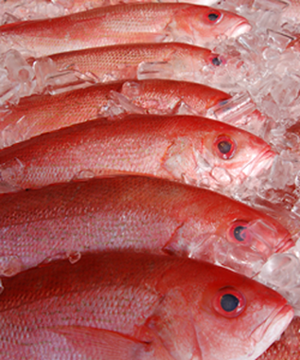That grilled red snapper at your favorite seafood restaurant may be just what it’s supposed to be — a tasty fish caught in the Atlantic or Gulf waters of the United States. On the other hand, there’s a good chance it’s rockfish, tilapia, or cod. There’s also a good chance that anything labeled “grouper” is really imported catfish. And monkfish could be a potentially dangerous pufferfish.
 Seafood can be a big scam. Researchers confirmed that the “bait and switch” was going on by testing the DNA of both fresh fish sold at markets, and cooked fish sold at restaurants. The DNA survives high heat, allowing scientists to pinpoint the exact species of fish being sold. Tests have indicated that seafood is mislabeled from a quarter up to almost three-quarters of the time.
Seafood can be a big scam. Researchers confirmed that the “bait and switch” was going on by testing the DNA of both fresh fish sold at markets, and cooked fish sold at restaurants. The DNA survives high heat, allowing scientists to pinpoint the exact species of fish being sold. Tests have indicated that seafood is mislabeled from a quarter up to almost three-quarters of the time.
Some of that is accidental, but some of it is intentional. Distributors or restaurants substitute less-expensive fish for more expensive varieties and pocket the difference. That can also cause health problems, because consumers might be served fish to which they’re allergic, or the fish might have been caught in polluted waters. And sometimes, fish that have been caught illegally are slipped in, too, which harms fish populations.
DNA testing can ensure that fish are properly marked, although only a tiny percentage of fish can be evaluated. To help labs, the FDA has started an online database that includes the genetic codes of many species of fish. That may boost the odds that the fish on your plate is just what it’s supposed to be.

